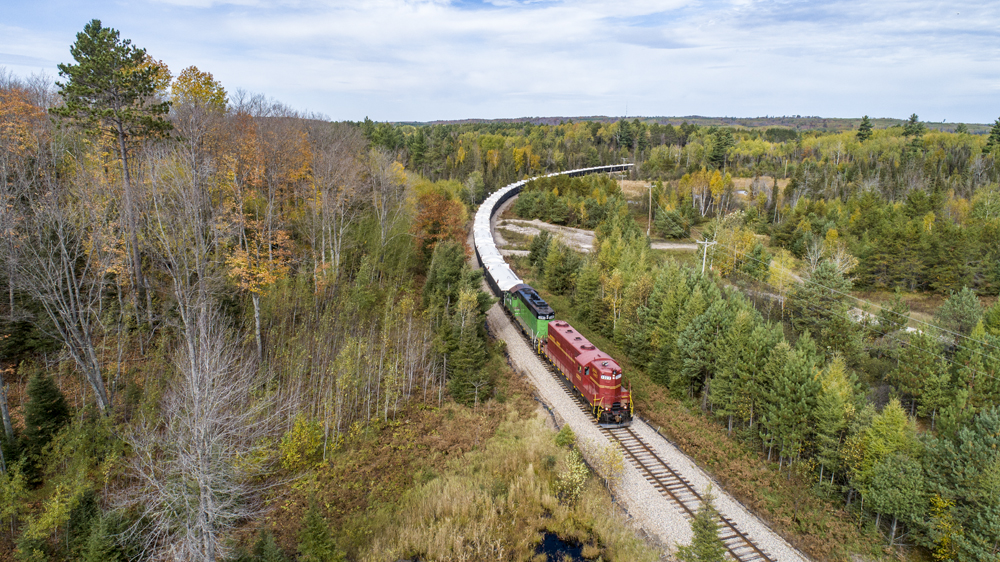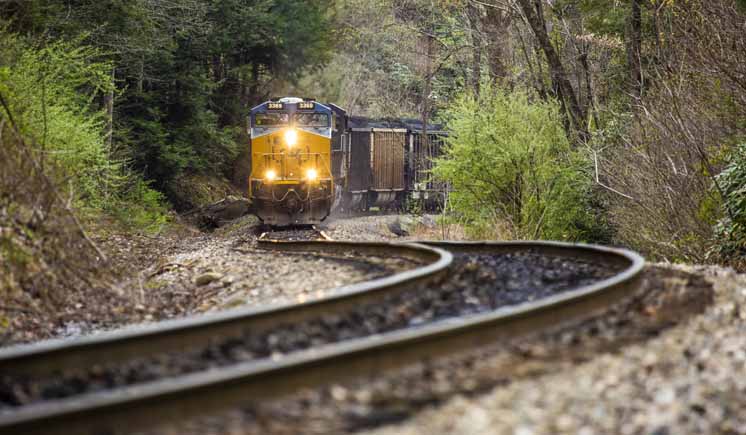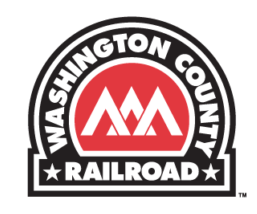
Mineral Range Railroad summary
The Mineral Range Railroad (MRA) is a short line railroad that operates in Michigan’s Upper Peninsula. It’s owned by Mineral Range Incorporated, a privately held corporation founded by an upper Michigan family. Headquartered out of a newly constructed engine house in Ishpeming, the railroad owns a portion of former Chicago & North Western Railroad and Lake Superior & Ishpeming Railroad standard-gauge track in Marquette County between Humboldt Mine and Pluto.
History
The Mineral Range Railroad is the second railroad of the same name. The first began as narrow gauge, connecting the copper ore mine near Calumet and the stamp mill at Hancock before eventually folding into the Duluth, South Shore & Atlantic in 1949. Today’s incarnation initially started in 2002 when it began switching a 3-mile industrial track near Ishpeming. The railroad gave up the operation in 2003, but later resumed on June 1, 2013. Early that year on January 1, 2013, the Mineral Range Railroad was founded as a common carrier with the purchase of 12 miles of track from the LS&I to Humboldt Mine. On October 1, 2014, the railroad handled its first revenue of nickel and copper concentrate.
Operations
Like its first incarnation, the Mineral Range Railroad continues both tradition and purpose of hauling copper ores and other minerals in an area known for its rugged terrain and brutal winter weather. Two subdivisions divert from Ishpeming that serves as the backbone to MRA’s size and market. The Blueberry Subdivision heads west on the previously owned LS&I to Humboldt Mine, now owned by Lundin Mining Corporation. As the only active primary-nickel mine operating in the United States, the shipment by rail is critical to the production of everything from stainless steel to electric-car batteries. The Pluto Subdivision heads south on the former C&NW’s Loop Line to Pluto, home to Pepin-Ireco’s Dyno Nobel blasting agent distribution facility. It’s another important industry for the Mineral Range as it supplies all mines in the area with explosives.
A diverse collection of diesel locomotives have been used in the roster over the years from Mineral Range’s beginnings as a contract supplier to now a common carrier. The railroad started with a Plymouth 25-ton Whitcomb, a Porter 50-tonner, and an EMD SW1. Acquisitions of more modern EMD GP9s and SWs have become more common to the fleet.
In addition to interchanges with the Canadian National Railway and Lake Superior & Ishpeming, CN serves as a tenant to the Mineral Range’s Blueberry Subdivision. Connecting at Ishpeming with its L’Anse Subdivision at Humboldt Junction heading westbound.
Read more about the Mineral Range Railroad in Trains‘ June 2022 issue.













